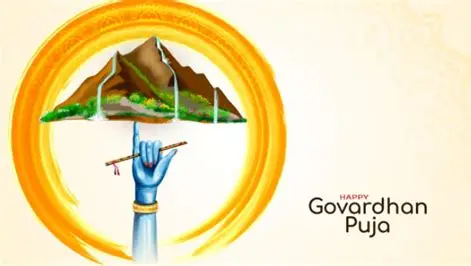Govardhan Puja, also known as Annakut Puja, is a revered Hindu festival celebrated the day after Diwali. It commemorates the legendary act of Lord Krishna lifting the Govardhan Hill to protect the villagers of Vrindavan from torrential rains sent by Lord Indra, the god of rain. This divine intervention symbolizes the triumph of devotion over fear, and the importance of nature and humility in spiritual life.
🕉️ Mythological Significance
According to the Bhagavat Purana, the people of Gokul traditionally worshipped Lord Indra to ensure favorable weather for their crops. However, Lord Krishna urged them to instead honor Govardhan Hill, which provided them with fertile land, grazing for cattle, and natural protection. Angered by this shift, Indra unleashed a devastating storm. In response, Krishna lifted the hill with his little finger and sheltered the villagers beneath it for seven days. Eventually, Indra realized his mistake and sought forgiveness.
🪔 Rituals and Celebrations
Govardhan Puja is observed with great devotion across India, especially in Mathura, Vrindavan, and other parts of northern India. The rituals include:
-
Creating a symbolic Govardhan Hill using cow dung, decorated with flowers and miniature figures.
-
Offering Annakut—a mountain of vegetarian food prepared by devotees and arranged in elaborate displays to honor Krishna.
-
Performing aarti and bhajans, expressing gratitude and reverence.
-
Adorning and worshipping cattle, acknowledging their role in agrarian life and their sacred status in Hinduism.
📅 Date and Muhurat (2025)
In 2025, Govardhan Puja falls on October 22, observed on the Pratipada Tithi of Shukla Paksha in the month of Kartik. The auspicious timings are:
-
Pratahkala Muhurat: 6:26 AM to 8:42 AM
-
Sayankala Muhurat: 3:29 PM to 5:44 PM.
🌾 Cultural Essence
Govardhan Puja is more than a mythological tribute—it’s a celebration of ecological harmony, community spirit, and spiritual resilience. It reminds devotees to respect nature, practice humility, and place faith in divine protection. The festival also fosters unity through communal feasts and shared rituals, reinforcing bonds among families and communities.

